Furniture business plans are the blueprints for building a thriving furniture enterprise. Whether you’re dreaming of a cozy brick-and-mortar store or a sleek online marketplace, a well-crafted plan is essential for navigating the complexities of this dynamic industry. This guide will equip you with the knowledge and strategies needed to transform your furniture vision into a profitable reality.
From understanding market trends and identifying your target audience to crafting a compelling marketing strategy and managing financial projections, this guide provides a comprehensive framework for success. We’ll delve into the key elements of a furniture business plan, covering everything from market analysis and operational considerations to legal compliance and growth strategies.
Market Analysis
A thorough market analysis is crucial for any furniture business to succeed. It helps identify the target audience, understand the competitive landscape, and anticipate future trends in furniture design and demand. This analysis will guide the business’s strategy, marketing efforts, and product development decisions.
Target Market Identification
Defining the target market is essential for effectively reaching potential customers. This involves considering demographic factors like age, income, lifestyle, and location, as well as psychographic factors like values, interests, and preferences. For instance, a furniture business specializing in high-end, contemporary designs would target affluent customers with an appreciation for modern aesthetics. Conversely, a business focusing on budget-friendly, practical furniture would cater to a wider demographic, including young professionals and families on a tighter budget.
Competitive Landscape Analysis
The furniture industry is highly competitive, with various players ranging from established brick-and-mortar stores to online retailers and furniture manufacturers. Understanding the competitive landscape is vital for positioning the business effectively and identifying potential opportunities. Analyzing competitors’ strengths and weaknesses, pricing strategies, product offerings, and marketing campaigns helps determine competitive advantages and develop a unique value proposition. For example, a new furniture business could differentiate itself by offering personalized design services, focusing on sustainable materials, or providing a curated selection of unique and handcrafted pieces.
Furniture Design Trends and Preferences
The furniture industry is constantly evolving, with emerging trends and preferences shaping consumer demand. Staying abreast of these trends is crucial for staying competitive and developing products that resonate with the target market. Researching current trends in furniture design, materials, and styles can provide valuable insights into what consumers are looking for. For instance, the growing popularity of minimalist design, sustainable materials, and multi-functional furniture reflects a shift towards simplicity, eco-consciousness, and space optimization.
Potential Demand for Different Furniture Types
Evaluating the potential demand for different types of furniture is essential for product development and inventory management. This involves analyzing the market for residential furniture, commercial furniture, and specialized furniture. Residential furniture caters to individual households and families, while commercial furniture caters to businesses, offices, and public spaces. Specialized furniture includes pieces designed for specific purposes, such as medical furniture, educational furniture, or outdoor furniture. Understanding the specific needs and preferences of each segment can help businesses tailor their product offerings and marketing strategies accordingly.
Business Model and Strategy
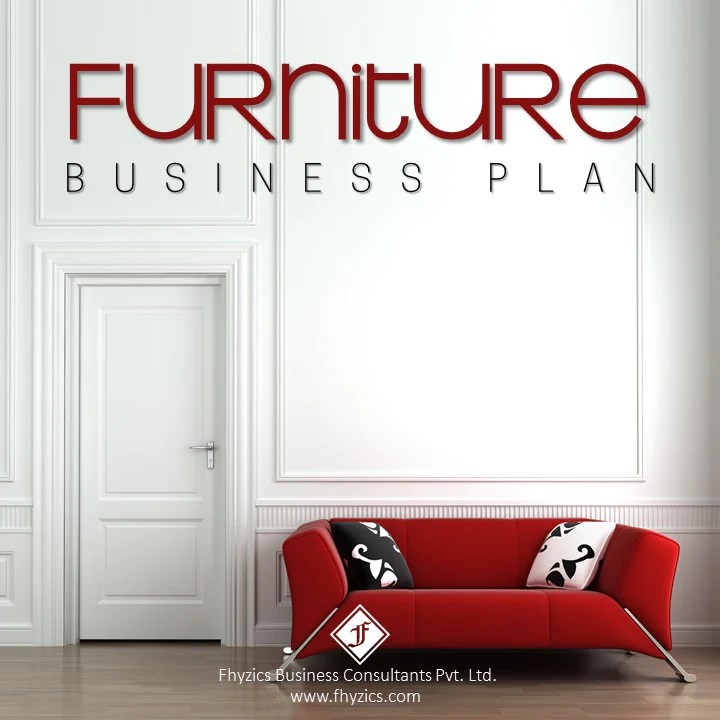
This section delves into the core business model, including the products or services offered, target customers, and value proposition. It also Artikels the marketing and sales strategy, operational structure, and competitive advantage that will drive the furniture business’s success.
Products and Services
The furniture business will offer a curated selection of high-quality, stylish, and functional furniture pieces catering to a diverse range of customer needs and preferences. The product line will include:
- Living room furniture: Sofas, armchairs, coffee tables, TV stands, and entertainment units.
- Dining room furniture: Dining tables, chairs, sideboards, and buffets.
- Bedroom furniture: Beds, dressers, nightstands, and wardrobes.
- Home office furniture: Desks, chairs, bookcases, and storage solutions.
- Outdoor furniture: Patio sets, lounge chairs, and dining tables.
The business will also offer complementary services such as:
- Interior design consultation: Providing expert advice on furniture selection, room layout, and décor.
- Custom furniture design and fabrication: Creating unique pieces tailored to specific customer requirements.
- Delivery and assembly: Ensuring seamless and convenient delivery and assembly of furniture purchases.
Target Customers
The target customers for the furniture business are discerning individuals and families seeking high-quality, stylish, and functional furniture pieces to enhance their living spaces. The business will focus on attracting customers who:
- Value quality craftsmanship and materials.
- Appreciate unique designs and contemporary aesthetics.
- Seek personalized service and expert advice.
- Are willing to invest in furniture that reflects their lifestyle and taste.
Value Proposition
The furniture business’s value proposition is based on offering:
- A curated selection of high-quality furniture pieces from reputable manufacturers.
- Unique and stylish designs that cater to diverse tastes and preferences.
- Exceptional customer service, including personalized advice and expert guidance.
- Competitive pricing and flexible payment options.
- Convenient delivery and assembly services.
Marketing and Sales Strategy
The marketing and sales strategy will focus on creating brand awareness, building customer relationships, and driving sales. Key strategies include:
- Establishing a strong online presence through a website and social media platforms.
- Developing targeted marketing campaigns to reach potential customers.
- Participating in industry events and trade shows to showcase products and build connections.
- Offering promotional discounts and special offers to attract new customers.
- Building a loyal customer base through excellent customer service and personalized experiences.
Pricing Strategy
The pricing strategy will be based on a value-based approach, considering the quality of materials, craftsmanship, and design of the furniture pieces. The business will offer competitive prices while ensuring profitability and maintaining a premium brand image.
Operational Structure
The furniture business will operate with a streamlined and efficient operational structure, focusing on:
- Sourcing: Establishing relationships with reputable furniture manufacturers and suppliers to ensure high-quality products.
- Inventory management: Implementing a system for efficient inventory control and storage to minimize waste and optimize stock levels.
- Distribution: Utilizing a network of reliable delivery partners to ensure timely and safe delivery of furniture to customers.
- Customer service: Providing excellent customer support throughout the purchase process, from initial inquiry to post-sale follow-up.
Competitive Advantage
The furniture business will differentiate itself from competitors by:
- Specializing in curated collections of high-quality, stylish, and functional furniture pieces.
- Offering exceptional customer service, including personalized advice and expert guidance.
- Providing convenient delivery and assembly services.
- Developing a strong brand identity that reflects the business’s commitment to quality, style, and customer satisfaction.
Financial Projections
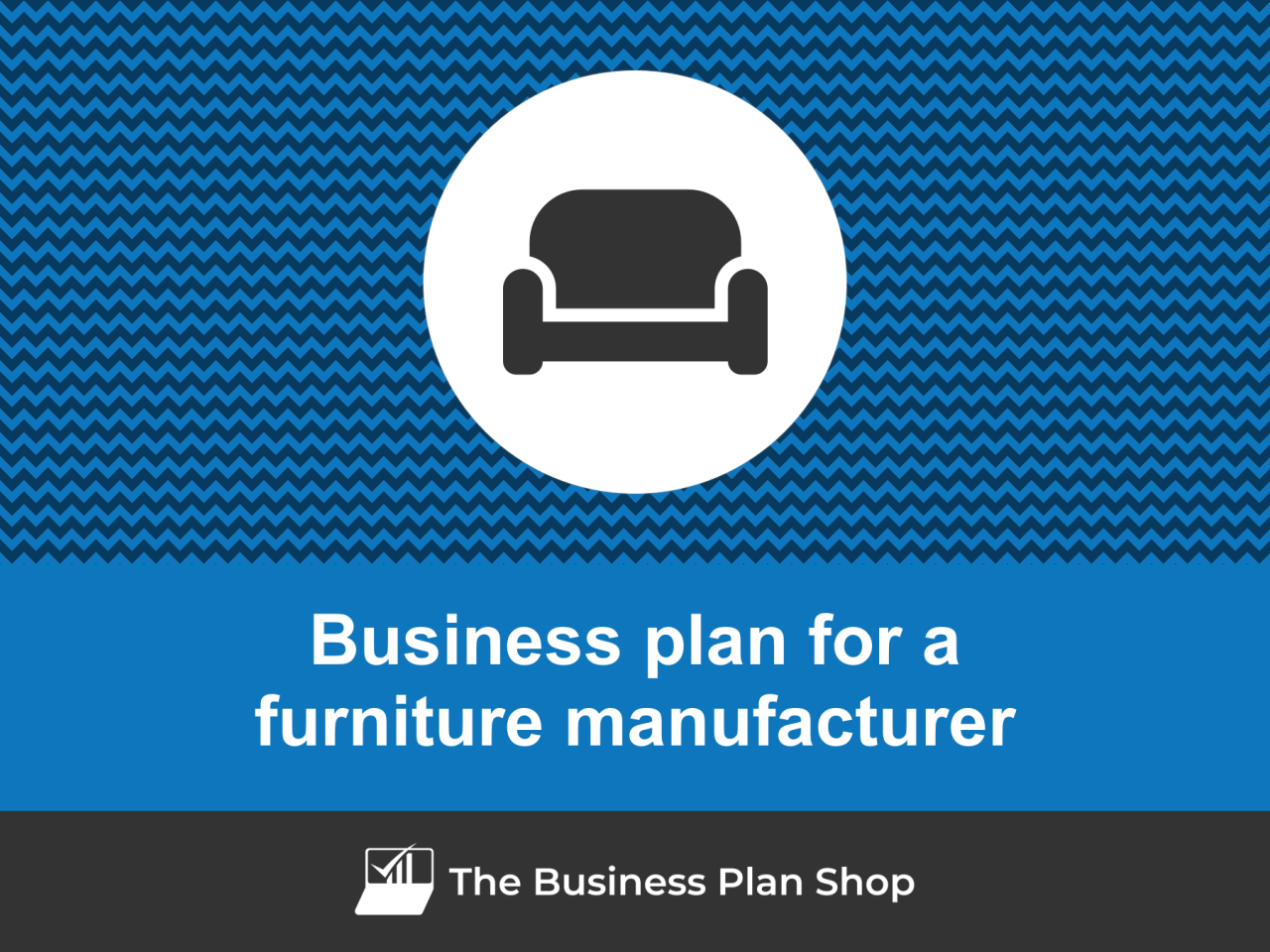
Financial projections are essential for any business plan, as they provide a roadmap for the company’s financial future. They help to identify potential funding needs, assess the business’s viability, and make informed decisions about pricing, marketing, and operations.
Revenue Projections
Revenue projections are estimates of the total income a business expects to generate over a specific period. This is based on factors like the expected sales volume, average selling price, and the anticipated growth rate of the market.
- For example, a furniture store might project its revenue based on the number of furniture pieces it expects to sell each month, the average selling price of each piece, and the anticipated growth rate of the furniture market in its region.
Expense Projections
Expense projections are estimates of the total costs a business expects to incur over a specific period. This includes both fixed costs (like rent and salaries) and variable costs (like materials and utilities).
- For example, a furniture store might project its expenses based on the monthly rent of its store, the salaries of its employees, the cost of furniture materials, and the cost of utilities like electricity and water.
Profitability Projections
Profitability projections are estimates of the business’s net income, which is the difference between its revenue and expenses. This is a key indicator of the business’s financial health and its ability to generate a return on investment.
- For example, a furniture store might project its profitability based on its projected revenue and expenses. If its revenue exceeds its expenses, the store will generate a profit. Conversely, if its expenses exceed its revenue, the store will incur a loss.
Startup Costs, Furniture business plans
Startup costs are the initial expenses incurred in setting up a business. This includes costs for inventory, equipment, marketing, and operating expenses.
- For example, a furniture store might need to invest in initial inventory of furniture pieces, equipment like delivery trucks and display shelves, marketing materials like brochures and advertisements, and operating expenses like rent and utilities.
Cash Flow Projections
Cash flow projections are estimates of the business’s cash inflows and outflows over a specific period. This is a critical component of financial planning, as it helps to ensure that the business has enough cash on hand to meet its obligations.
- For example, a furniture store might project its cash flow based on its expected revenue, expenses, and financing activities. This projection will show the store’s cash balance at the end of each period, and it will help to identify any potential cash shortages or surpluses.
Pricing Strategy
A pricing strategy is a plan for setting the prices of a business’s products or services. It should align with market demand, profitability goals, and the business’s overall positioning.
- For example, a furniture store might use a cost-plus pricing strategy, where it sets prices based on the cost of producing and selling the furniture plus a markup for profit. Alternatively, it might use a value-based pricing strategy, where it sets prices based on the perceived value of the furniture to customers.
Operations and Management
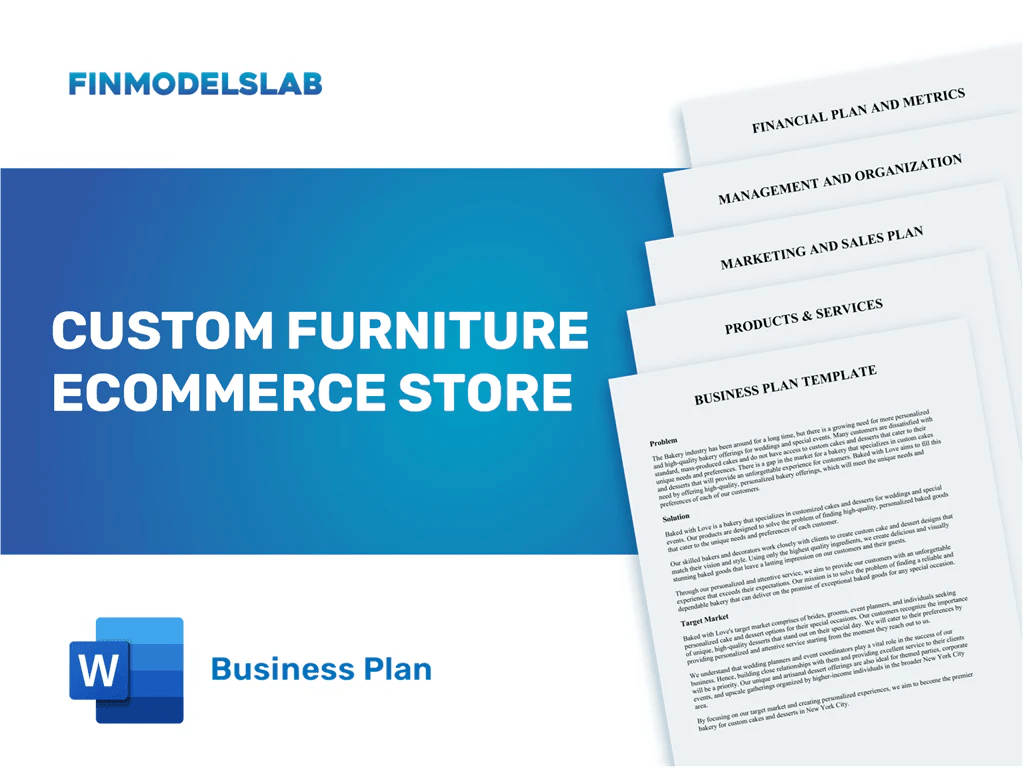
Efficient operations are the backbone of any successful furniture business. This section Artikels the key operational aspects, including production or sourcing, staffing, customer service, and inventory management, crucial for ensuring smooth operations and customer satisfaction.
Production or Sourcing Process
The production or sourcing process is fundamental to a furniture business. It determines the quality, cost, and availability of the products offered.
- In-House Production: This involves manufacturing furniture within the business’s facilities. It offers greater control over quality and design but requires significant investment in equipment, skilled labor, and raw materials.
- Outsourcing Production: This involves contracting with external manufacturers to produce furniture according to specifications. It offers cost savings and flexibility but requires careful supplier selection and quality control measures.
Regardless of the chosen approach, a robust quality control system is essential to ensure consistent product quality and customer satisfaction. This involves:
- Establishing Quality Standards: Defining clear quality standards for materials, workmanship, and finished products.
- Implementing Inspection Procedures: Regularly inspecting materials, production processes, and finished goods to identify and address any quality issues.
- Maintaining Supplier Relationships: Collaborating with suppliers to ensure they meet quality standards and maintain consistent product quality.
Effective inventory management is crucial for maintaining a sufficient supply of furniture while minimizing storage costs and waste. This involves:
- Demand Forecasting: Predicting future demand for different furniture items to optimize inventory levels.
- Inventory Tracking: Maintaining accurate records of inventory levels and movement to ensure timely replenishment.
- Inventory Optimization: Implementing strategies to minimize inventory holding costs while ensuring sufficient stock availability.
Staffing Requirements and Roles
A well-structured team is crucial for the success of any furniture business. The specific staffing requirements will vary depending on the size and scope of the business, but generally include:
- Sales and Marketing: Responsible for generating leads, managing customer relationships, and promoting the business.
- Production or Sourcing: Overseeing the production or sourcing process, ensuring quality control, and managing supplier relationships.
- Operations and Logistics: Managing inventory, orders, deliveries, and warehouse operations.
- Customer Service: Providing support to customers, resolving issues, and ensuring satisfaction.
- Finance and Administration: Handling accounting, payroll, and administrative tasks.
Defining clear job descriptions and responsibilities for each role is essential for effective teamwork and operational efficiency. This ensures that all team members understand their roles and contribute effectively to the overall success of the business.
Crafting a solid furniture business plan is crucial for success. It’s not just about the big picture, but also the intricate details, like how you’ll approach each piece. Take a look at this woodwork plan for inspiration – it’s packed with ideas that can help you streamline your production process.
A well-defined plan, incorporating elements like this, will ensure your furniture business is built on a strong foundation.
Customer Service Strategy
Customer service is paramount for any furniture business. It is crucial to build strong relationships with customers and ensure their satisfaction. This involves:
- Providing Excellent Customer Support: Offering prompt and helpful assistance to customers, addressing their concerns, and resolving issues efficiently.
- Building Customer Relationships: Engaging with customers, understanding their needs, and providing personalized service.
- Managing Customer Expectations: Clearly communicating delivery timelines, product specifications, and any potential delays or issues.
- Seeking Customer Feedback: Encouraging customers to provide feedback on their experiences and using it to improve products and services.
A robust customer service strategy can foster customer loyalty, increase repeat business, and build a positive reputation for the furniture business.
Inventory, Orders, and Deliveries Management
Managing inventory, orders, and deliveries effectively is essential for smooth operations and customer satisfaction. This involves:
- Inventory Management System: Implementing a system to track inventory levels, manage stock replenishment, and minimize waste.
- Order Processing System: Establishing a system for receiving, processing, and fulfilling customer orders efficiently.
- Delivery Management: Organizing delivery schedules, coordinating with delivery partners, and ensuring timely and efficient delivery of furniture.
Investing in a comprehensive inventory and order management system can streamline operations, improve efficiency, and enhance customer satisfaction. This could involve using software solutions that integrate inventory tracking, order processing, and delivery management functionalities.
Marketing and Sales
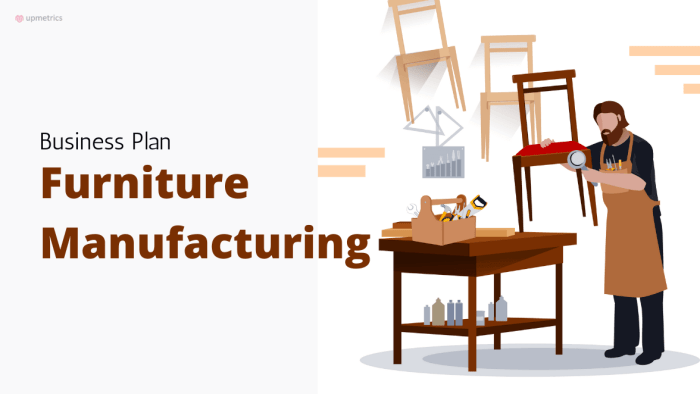
A well-defined marketing and sales plan is essential for any furniture business to achieve success. It involves attracting potential customers, generating leads, and ultimately driving sales.
Target Customer Segmentation
Understanding your target customer segments is crucial for crafting effective marketing campaigns. This involves identifying the specific groups of people who are most likely to purchase your furniture. Consider factors such as age, income, lifestyle, and home decor preferences. For example, you might target young professionals seeking modern and stylish furniture for their apartments or families looking for durable and comfortable pieces for their homes.
Marketing Strategies
Online Marketing
- Website Development: Create a user-friendly website that showcases your furniture collection, pricing, and services. Ensure high-quality product images, detailed descriptions, and easy navigation.
- Search Engine Optimization (): Optimize your website for search engines to improve visibility and attract organic traffic. Use relevant s and phrases in your website content, meta descriptions, and image alt tags.
- Social Media Marketing: Establish a presence on social media platforms like Facebook, Instagram, and Pinterest. Share engaging content, including product photos, behind-the-scenes glimpses, and customer testimonials.
- Paid Advertising: Utilize platforms like Google Ads and social media advertising to reach a wider audience. Target specific demographics and interests to maximize your return on investment.
- Email Marketing: Build an email list and send regular newsletters featuring new arrivals, promotions, and design inspiration.
Offline Marketing
- Print Advertising: Consider placing ads in local newspapers, magazines, and community publications. Target publications that reach your desired customer segments.
- Public Relations: Build relationships with local media outlets and bloggers to secure positive press coverage and brand awareness.
- Events and Trade Shows: Participate in home decor events, furniture shows, and local community fairs to showcase your products and connect with potential customers.
- Partnerships: Collaborate with interior designers, architects, and other businesses in the home decor industry to cross-promote and reach a wider audience.
- Referral Programs: Offer incentives to existing customers who refer new clients to your business.
Promotional Strategies
- Sales and Discounts: Offer seasonal sales, limited-time promotions, and discounts to attract customers and incentivize purchases.
- Loyalty Programs: Implement a loyalty program to reward repeat customers with exclusive discounts, early access to new products, and personalized offers.
- Contests and Giveaways: Host online and offline contests and giveaways to generate excitement and engagement around your brand.
- Free Delivery or Assembly: Offer free delivery or assembly services to enhance the customer experience and create a competitive advantage.
- Customer Service: Provide excellent customer service to build brand loyalty and encourage positive word-of-mouth referrals.
Website and Online Presence
Your website should be a key element of your marketing strategy. It serves as your online storefront, showcasing your products, services, and brand identity.
- Product Photography: Invest in high-quality product photography to showcase your furniture in its best light. Use professional photographers or hire a freelance photographer specializing in product photography.
- Detailed Product Descriptions: Provide comprehensive product descriptions that include dimensions, materials, care instructions, and any unique features. Use clear and concise language that highlights the benefits of each piece.
- User-Friendly Navigation: Make it easy for customers to browse your website and find the furniture they are looking for. Use clear categories, search functionality, and intuitive navigation menus.
- Contact Information: Make it easy for customers to contact you with any questions or inquiries. Include a contact form, phone number, and email address on your website.
- Blog or Content Marketing: Create a blog or content marketing strategy to provide valuable information and inspiration to your target audience. Share articles on furniture trends, design tips, and home decor ideas.
Legal and Regulatory Considerations
Navigating the legal landscape is crucial for any furniture business to operate smoothly and avoid potential issues. This section Artikels key legal aspects, including business structure, necessary permits and licenses, potential legal issues, and compliance with safety and environmental regulations.
Business Structure
Choosing the right legal structure for your furniture business is essential. It determines your liability, tax obligations, and operational procedures. The most common structures are:
- Sole Proprietorship: This is the simplest structure, where the business is owned and operated by one person. The owner is personally liable for all business debts and obligations.
- Partnership: Two or more individuals share ownership and responsibility for the business. There are different types of partnerships, each with its own liability and tax implications.
- Corporation: A corporation is a separate legal entity from its owners, offering limited liability protection. This means that the owners are not personally liable for business debts. Corporations can be further classified as S-corps or C-corps, depending on their tax structure.
Permits and Licenses
To operate legally, furniture businesses need specific permits and licenses depending on their location, business type, and scope of operations. Common permits and licenses include:
- Business License: This is a general license required by most municipalities to operate a business.
- Sales Tax Permit: If your business sells furniture directly to consumers, you will need a sales tax permit to collect and remit sales tax.
- Occupational License: Some states or municipalities may require specific occupational licenses for furniture manufacturers, retailers, or wholesalers.
- Environmental Permits: If your business involves manufacturing or disposal of furniture, you may need permits to comply with environmental regulations.
Legal Issues
Furniture businesses face several potential legal issues, including:
Product Liability
Furniture manufacturers and retailers are responsible for ensuring the safety of their products. If a customer is injured due to a defective product, they can sue the business for product liability.
For example, if a chair collapses under a customer’s weight due to a manufacturing defect, the business could be held liable for the customer’s injuries.
Intellectual Property
Protecting intellectual property, such as designs, trademarks, and patents, is crucial for furniture businesses.
For example, a furniture manufacturer may want to protect the design of a unique chair by registering it as a design patent.
Customer Privacy
Furniture businesses collect personal information from customers, such as contact details and payment information. They must comply with privacy laws, such as the General Data Protection Regulation (GDPR) in the European Union and the California Consumer Privacy Act (CCPA) in California, to protect customer privacy.
Safety and Environmental Regulations
Furniture businesses must comply with safety and environmental regulations to ensure the safety of their products and minimize environmental impact.
- Safety Standards: Furniture must meet safety standards set by organizations like the Consumer Product Safety Commission (CPSC) in the United States.
- Environmental Regulations: Businesses must comply with regulations related to waste disposal, air and water pollution, and the use of hazardous materials.
Growth and Expansion
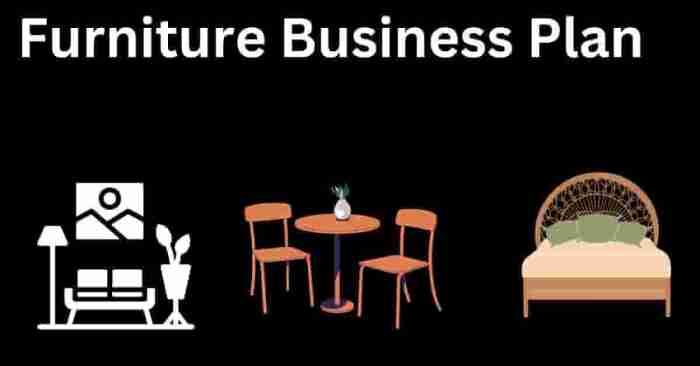
A successful furniture business should always be looking for ways to grow and expand. This section will explore potential growth opportunities, strategies for scaling the business, and the impact of technology on the industry.
Expanding Product Lines
Expanding product lines can attract new customers and increase sales. Consider adding new furniture styles, materials, or price points to appeal to a wider audience. For example, a furniture store specializing in modern furniture could expand into traditional or farmhouse styles. Additionally, offering a wider range of furniture pieces, such as dining sets, bedroom furniture, and home office furniture, can attract customers seeking a complete home furnishing solution.
Opening New Locations
Opening new locations allows businesses to reach new markets and increase brand awareness. Careful market research is essential to determine the best location for a new store. Factors to consider include population density, demographics, and competition. A furniture store could open a new location in a growing suburban area or a city center with high foot traffic.
Entering New Markets
Entering new markets can provide significant growth opportunities. This could involve selling furniture online to reach a wider customer base or expanding into new geographic regions.
Strategies for Scaling the Business
Scaling a furniture business requires a well-defined strategy.
- Streamlining Operations: Improving operational efficiency is crucial for scaling a furniture business. This could involve implementing new inventory management systems, optimizing logistics, and automating repetitive tasks.
- Investing in Technology: Technology can play a significant role in scaling a furniture business. Implementing an online store, utilizing customer relationship management (CRM) software, and adopting digital marketing strategies can enhance efficiency and customer engagement.
- Building a Strong Team: As the business grows, it’s essential to build a strong team with diverse skills and experience. This could involve hiring additional sales representatives, marketing professionals, and logistics experts.
- Securing Funding: Scaling a business often requires additional funding. Businesses can explore options such as bank loans, venture capital, or private equity investments.
Impact of Technology and Automation
Technology and automation are transforming the furniture industry.
- E-commerce: Online furniture retailers are gaining popularity, offering customers convenience and a wider selection.
- 3D Design and Virtual Reality: 3D design tools allow customers to visualize furniture in their homes, while virtual reality (VR) technology provides immersive shopping experiences.
- Automated Manufacturing: Automated manufacturing processes are increasing efficiency and reducing production costs.
Long-Term Vision
A long-term vision for a furniture business should include:
- Continuous Innovation: Staying ahead of industry trends by embracing new technologies and developing innovative furniture designs.
- Sustainable Practices: Adopting environmentally friendly practices, such as using sustainable materials and reducing waste.
- Customer-Centric Approach: Prioritizing customer satisfaction by offering excellent service, personalized experiences, and high-quality products.
- Community Engagement: Building relationships with local communities through sponsorships, events, and charitable contributions.
Final Conclusion

Building a successful furniture business requires a blend of creativity, business acumen, and strategic planning. By following the steps Artikeld in this guide, you’ll be well-equipped to create a compelling furniture business plan that sets the stage for growth, profitability, and lasting success. Remember, a solid plan is your compass, guiding you through the ever-evolving furniture landscape and ensuring you’re always moving towards your goals.
FAQ Explained: Furniture Business Plans
What are the most common mistakes people make when creating a furniture business plan?
Common mistakes include neglecting thorough market research, underestimating startup costs, failing to develop a strong marketing strategy, and lacking a clear understanding of legal and regulatory requirements.
How can I find reliable furniture suppliers?
You can find reliable suppliers through industry trade shows, online directories, and recommendations from other furniture businesses. It’s crucial to thoroughly vet potential suppliers, considering factors like quality, pricing, and reliability.
What are some key marketing strategies for a furniture business?
Effective marketing strategies include building a strong online presence, utilizing social media platforms, running targeted advertising campaigns, collaborating with interior designers and influencers, and offering exceptional customer service.
